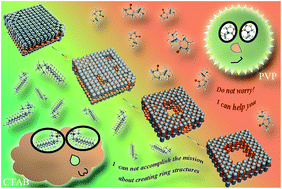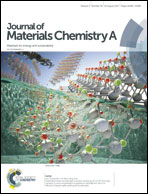Surfactant-mediated synthesis of single-crystalline Bi3O4Br nanorings with enhanced photocatalytic activity†
Abstract
We present a surfactant-mediated approach to the production of single-crystal Bi3O4Br nanorings via a simple solvothermal method. The ring-like morphology is rare among bismuth oxyhalides, and the reaction pathways are superior to traditional chemical transformations. In detail, Bi3O4Br nanorings are prepared in three stages: (1) the formation of precursors, (2) selective etching and (3) Ostwald ripening. During these steps, the extra usage of templates is avoided and a series of useful intermediates are obtained. Besides, this method can be extended to fabricate other bismuth oxyhalide nanorings. Under visible-light irradiation, all of our samples are photo-activated. The Bi3O4Br nanorings exhibit an efficient oxygen-evolution rate (72.54 μmol h−1) and pollutant degradation rate (4.71 × 10−2 g min−1 m−2), which can be attributed to their unique ring structures and band potentials. Thus, the surfactant-mediated chemical conversion strategy not only paves a new way to enhance the photocatalytic activity of bismuth oxyhalides, but also provides an important large-scale route for designing other nanomaterials with ring-like structures.



 Please wait while we load your content...
Please wait while we load your content...